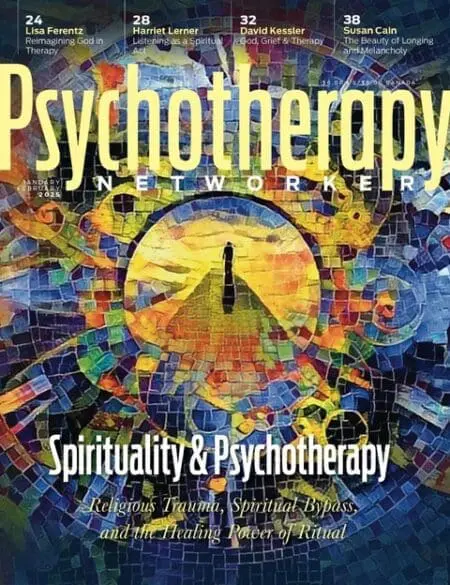People often ask how I do this work—how I sit with trauma, grief, and deep emotional pain day after day—and I think they’re surprised when part of the answer is: I laugh.
Not because pain is funny. And not because laughter is a good distraction. But because humor has become one of the most unexpected and powerful tools in my clinical work—especially with clients who’ve experienced complex trauma.
It’s not something I plan. It’s not a technique or a strategy. It happens naturally, in real, alive moments between me and my clients. But the fact that you can’t force humor doesn’t mean you can’t cultivate the conditions where it can arise more easily. As therapists, we can do this by allowing space for authenticity, loosening the grip of clinical performance, and meeting our clients with genuine presence rather than rigid professionalism. It’s born from attunement, curiosity, and relational trust. And when it shows up, it’s often a bridge to something deeper.
Research supports this, too—though it doesn’t get talked about enough in clinical training. Studies show that humor can help regulate the nervous system by activating the parasympathetic response. It lowers stress, releases tension, and increases feelings of safety and connection. For trauma survivors who’ve lived in prolonged states of vigilance, this can open a new door—not just cognitively, but somatically.
It also helps with relationship-building. Humor, when used with care and attunement, strengthens the therapeutic alliance—the most reliable predictor of successful therapy outcomes. Clients often relax when they realize therapy doesn’t require constant heaviness and they’re allowed to bring their whole selves, including humor, into the room. They can be fully human in therapy—and that alone can be healing.
Humor can be a form of curiosity—with warmth, humanity, and a little irreverence mixed in. I often find myself curious and leaning in, especially when a client seems to be engaging in a self-destructive pattern and I want to know more about what’s underneath. Curiosity almost always leads somewhere interesting, and when it’s mixed with playful humor, it can open what judgment closes.
At times, I’m the one who starts laughing—not at anyone, but in warm recognition of something beautifully human. A quirky pattern, a tender truth, a moment of absurdity that a client hasn’t yet seen as endearing. And then it happens: I see the shared recognition bloom in their face—a quiet “that is pretty funny” realization. And often, it’s in that moment of mutual recognition that the real work begins.
As a Brainspotting clinician, I sometimes use a pointer. Once, a client—struggling with existential depression—looked at me and asked, “What’s the point of all this?” I gently said, “I get that. Just notice that question, what’s the point, as you stare at this point,” then paused and added, “no pun intended.” It was corny, but we both burst into laughter. And in that moment, he felt a loosening in his chest. It created just enough space for something new to emerge—a softening, a breath, a possibility, and an ability to release fear.
Over time, I’ve noticed that trauma survivors have often been taught that vulnerability is dangerous, or that emotions make them weak. Humor, when it arises naturally in the room, can shift that dynamic. I’ve had clients tease their own inner critic, mock the absurdity of perfectionism, and say things like, “I can’t believe I’m paying you to point out my bullshit.” And we laugh. And then we work. And the humor not only deepens the work, it enhances our relationship.
I’ve seen many clients soften in moments of shared laughter—something lands, tension releases, and a stuck place transforms into an opening. The laugh isn’t about avoiding pain; it’s about making room for it. Sometimes, it’s that lightness that lets the tears finally come. In trauma therapy, this can be essential.
Many of my clients who carry developmental trauma or struggle with codependency arrive armored—trying to please, being overly agreeable, careful not to rock the boat. Understandably so. In many families, especially those marked by trauma, enmeshment, or emotional neglect, having needs meant being too much or not enough. So they learned to suppress them to stay safe and feel loved.
But humor can highlight blind spots in a way that joins rather than shames, like when I told a client who couldn’t say no to a coworker, “It’s really nice of you to do all their work for them.” Humor lets us slip into tough emotional places without always pushing against our clients’ defenses.
Many of us were taught to associate healing with suffering, and the belief that therapy must be heavy to be real is still pervasive. But healing isn’t just about catharsis—it’s about safety. And sometimes, safety feels like a shared laugh, a soft “I’ve been there, too” moment.
As a trauma therapist, I’ve come to recognize that joy and sorrow aren’t opposites; they live side by side. Clients don’t need us to carry only their pain; they need us to witness the fullness of their humanity. Many trauma survivors have lived through darkness in ways that make them less afraid of naming it. Some even meet it with humor—not to minimize the pain, but to stay connected to something human and grounding.
Dark humor, in particular, can sometimes be a sign that they’re not bypassing the hard stuff, but are learning to carry it with less fear. For example, one time a client said, “I got closure this past weekend by flipping my grandma off at a Chili’s and leaving her with the bill. People were staring like, Wow, that person just flipped off a sweet old lady? But honestly, that was the most empowered I’ve ever felt.” During a guided visualization, another client let out a snort-laugh and said, “Oh my God, there’s a face looking back at me. It looks as shocked as I feel.” Then she added, “Great. Even my trauma’s like, You’re still here?”
Humor has to be used with deep care and must emerge organically, meaning it arises naturally in the moment, from genuine connection and attunement, not as a technique or performance. It has to come from your own inner child—the part of you that still plays, still notices the absurd, and still knows how to be shamelessly silly. Also, we need to remember that humor is subjective, influenced by culture and all our intersecting identities. It’s never one-size-fits-all. What one person finds funny, another person may find insensitive.
There are many moments when saying something that might be humorous wouldn’t enhance therapy—when it would be a deflection, or misattuned. But when it’s spontaneous, grounded in the relationship, and respectful of the client’s experience, it can invite a deepening rather than avoidance. Motivation is everything.
As clinicians, we can understand our own motivation for injecting humor into our interventions by asking ourselves questions like, “What’s my reason for bringing this up now?” When our clients say something humorous or make a joke, we can consider saying, “I noticed you laughed when you said that, and I’m wondering if there’s something more behind that laugh.” It’s not the humor itself that matters most but what it’s doing in the room.
Healing doesn’t always start with crying. Sometimes it begins with a snort-laugh in a quiet office. Sometimes it starts with the nervous system relaxing just enough to say, “Maybe I can let someone in.”
Allison Briggs
Allison Jeanette Briggs, LPC, is a trauma therapist and writer specializing in developmental trauma, codependency, and relational healing. She integrates EMDR, Brainspotting, and other trauma-informed modalities to help clients break free from survival patterns and reconnect with their authentic self. Contact: on-being-real.com.













